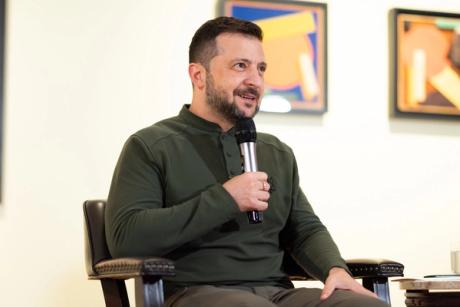
As Russia’s invasion grinds on and debate continues over allowing Ukraine to use Western-supplied missiles to strike military targets within Russia, the United States government this month allocated new aid to Ukraine for preservation of cultural heritage and instituted long-term controls on the importing of “archaeological and ethnological materials” that have been seized via wartime pillaging.
The US State Department announced the additional cultural support on the margins of the United Nationals General Assembly in New York on Thursday (26 September), on the same day that US President Joe Biden told Ukrainian President Volodymyr Zelensky at the White House in Washington, DC, that he would be fast-tracking nearly $8bn in US military aid.
The new cultural package includes the US ensuring in partnership with the University of Pennsylvania’s Cultural Heritage Center that “Ukrainians have the data and skills they need to repair and restore damaged cultural heritage and to counter false narratives about Russia’s unprovoked war and Ukraine’s unique cultural identity”, the State Department’s announcement explained.
On 25 September, Brian I. Daniels, director of research and programmes at the Penn Cultural Heritage Center, which is part of the Penn Museum, testified before the US Congress’s Tom Lantos Human Rights Commission during a session focused on Russia’s campaign to erase Ukrainian culture and identity.
“Cultural targeting should concern us greatly,” Daniels told the commission. Based on data from the Ukrainian Heritage Monitoring Lab, his institution, the Smithsonian Cultural Rescue Initiative, Virginia Museum of Natural History and University of Maryland have been able “to apply our research and identify instances that point to systematic and widespread targeting by Russia”, he said.
The State Department also announced that the FBI and Justice Department will work with Ukraine’s Prosecutor General on strengthening Ukraine’s capabilities in tracking, investigating and prosecuting cases of cultural artefacts that have been stolen, looted and trafficked from Ukraine.
A spokesperson for the Ukrainian Prosecutor General’s office said in a statement on 27 September that its delegation, which was in the US last week, discussed at meetings “the issue of documenting war crimes and the illegal movement of cultural values”.
Emergency import restrictions imposed on 10 September by the Departments of Justice and Homeland Security, based on “a determination made by the United States Department of State under the terms of the Convention on Cultural Property Implementation Act”, are aimed at preventing the “illicit removal and sale of Ukraine’s cultural heritage”, according to the text of the rule.
Archaeological and ethnological material in the list include “objects related to funerary rites and burials dating from 200CE to 1917”. Russia has been targeting historic burial mounds in Ukraine. The restrictions are in place until March 2029.
Earlier this month, in Naples for the G7 Culture Ministerial, the US State Department’s assistant secretary of state for educational and cultural affairs, Lee Satterfield, announced a $1m grant for the latest phase of a multi-year project of the International Centre for the Study of the Preservation and Restoration of Cultural Property (ICCROM) to safeguard Ukrainian cultural heritage. It is part of an overall US commitment of $10.5m via the Ukraine Cultural Heritage Response Initiative.
“Ukrainians are fighting for the human rights and freedoms we all cherish,” Satterfield said. “And they are also fighting, in a very real sense, for their identity as a distinct and unique culture, which Vladimir Putin has denied—a denial he has used to falsely justify his brutal, full-scale invasion. This funding will support the heroic efforts of Ukrainians to protect and preserve their cultural heritage.”


